15.1 – Monsoon blues
Back in the day, I traded stocks with ICICI Direct. Around the same time, MCX had just started operations, and ICICI was one of the first brokers to get a membership. MCX was aggressively campaigning and were conducting workshops and seminars to educate market participants, hoping to get more activity on the exchange. I was in the discovery phase, curious to know about everything tradable in India. I attended some of these sessions and, for some reason, believed I would be far more efficient trading an alternate asset like commodities as opposed to trading equities.
I was quite excited to start trading commodities. I quickly showed up at my broker’s office with all the necessary documents to open my commodities trading account. To my surprise, I was one of their earliest clients from Bangalore to open an account with MCX. It took about 12 days (that seemed like an eternity) to set up my account with MCX.
Finally, my broker called me to say I’m good to go live and place trades the next day. I actually took a day off from work to trade commodities! I was thrilled to put my new found commodities knowledge (although half-baked) to practice.
I chose to trade ‘Pepper futures’. Though the rationale behind this choice eludes memory, Pepper futures it was!
So, my first commodities trade was ‘Long pepper’, 10 lots (I guess it was a 1 metric tonne contract), I don’t remember the exact price, but I suppose it was somewhere around Rs.7,500/- per quintal. I had bet my entire trading account on Pepper futures!
What followed through was quite predictable. To my dismay, Pepper hit its 52-week low over the next two days, I brought in additional capital, but Pepper continued to crash, as did my account until there was nothing left in it.
Dejected, I did some post-mortem analysis to figure out what went wrong and realised the monsoons were expected to be great in Kochi, which would result in an outstanding harvest of Pepper.
Only now did I understand that one really needs to have some understanding of monsoons and harvest cycles before trading agri commodities. Unfortunately, I learnt this lesson at a very high price. No wonder I remember it to this day. J
Anyway, considering this, we will spend a little time understanding a bit of this topic, and hopefully, you will not make the same mistakes I did in the past.
And, just so you know – right after I burnt my trading account with my first commodities trade, what happened next is easy to guess – Pepper futures bottomed out and rallied nonstop to Rs.12,500/- per quintal!
15.2 – Understanding Rainfall
The Indian economy’s dependence on agriculture has reduced over the years. A few decades ago, agriculture contributed to over 30% to our GDP, but this has now reduced to about 10%. However, agriculture and allied services are still the largest employers in India. This perhaps explains why the Central Government most often takes a populist stance when it comes to reforms and policies in this sector.
Have a look at the snapshot below; this gives you an idea of which sector contributes how much to the Indian economy –
This data is published by RBI and is freely available on the RBI website. The data is available for as long back as the 50s. I’ve just manipulated the data to show the percentage contribution of each sector. As you can see, the percentage contribution of agriculture has declined over the years, while the % contribution of services (mainly software and allied services) has steadily increased.
But, like I just mentioned, agriculture is still the largest employer in India, and this entire industry and workforce is dependent on how the yearly rainfall pans out. This is quite natural as 2/3rd of India’s arable land is rain-fed.
There are two main rainfalls seasons (monsoons) in India –
- The Southwest Monsoon (principal rainfall season), and
- The Northeast Monsoon
I will not get into the technicalities of how these spells are caused, clearly not my area of expertise. However, these are the things you need to know about these two seasons –
- The south-west monsoon occurs from southern India and covers all the regions up to central India. This spell is expected to start around June/July through September/October.
- The Northeastern monsoon covers northeastern India, North India, Himalayas, and the western parts, and a large part of Tamil Nadu. This spell occurs from early December through March.
During each of these monsoon seasons, seeds are sown and crops harvested. Based on how good or bad the monsoon is, the harvest can be estimated.
- Crops sown during the south-west monsoons is called the Kharif Crop (it is even referred to as the monsoon crops). These are mainly pulses, millets, rice, urad dal, moong dal, cotton etc. The sowing of Kharif crop takes placed around end May-early June (before the south-west spell), and harvesting is done post the monsoons, i.e. around October.
- Crops sown during the northeast monsoons is called the Rabi Crop (it is even referred to as the winter crops). Rabi crops are mainly wheat, gram, coriander, mustard, oats etc. The sowing of rabi crop occurs at the onset of winter, and harvest of Rabi crops are around end April.
Rice and Wheat are India’s staple, contributes close to 40% of the food grain production, and hence plays a crucial role in India’s food security. Do note; they are harvested and sown in Karif and Rabi season respectively.
The progress of sowing and harvesting is continuously monitored and is reported across leading publications. Have a look at this –
This one reports the progress of Rabi crops –
In fact, with whatever basic knowledge we have gathered so far, I’d request you to read this news piece.
The idea is to make sure; we understand what is being discussed here and relate to the news article. If you are a serious agri trader, I’d expect you to continuously keep track of such news pieces and strategies your trades.
The following agri commodities are available to trade on MCX –
- Cardamom
- Castor Seed
- Cotton
- Crude Palm Oil
- Kapas
- Mentha Oil
Of all these agri commodities, I’d recommend you trade Cardamom and Mentha Oil, simply because of the liquidity reasons.
Let’s discuss these two commodities. Also, note that agri commodities (especially the Indian agri commodities) are traded till 5:00 PM.
15.3 – Cardamom
Cardamom is a spice mainly grown in Southern India (Karnataka & Kerala). The cardamom variety grown in India is called ‘Small Cardamom’. India is the 2nd largest producer and 1st largest consumer of Cardamom, while Guatemala is the world’s largest producer of Cardamom. The Cardamom produced by Guatemala is mainly for export.
Cardamom, as you may know, is mainly used in India sweets. It also has few therapeutic applications like skin and dental care – not that savouring sweets are less therapeutic. ☺
Cardamom is a Kharif crop; the demand-supply dynamics mainly depends on –
- The southwest monsoons
- The quality – flavour, colour, size, and aroma of the harvest
- Production parameters – like inset attack on plantation
- Stock available at both India and Guatemala
- Domestic consumption patterns (although this is quite steady over the years)
Let’s take a quick look at the contract specifications. Unlike other commodities listed on MCX, Cardamom does not have two variants. So don’t go looking for Cardamom and Cardamom mini.
The supply and demand for cardamom is kind of steady. Coincidentally, I read a news piece today related to this, and I thought it would be interesting to shares the same here –
The contact specs for Cardamom are as below –
- Price Quote – Per kilogram
- Lot size – 100 kgs
- Tick size – Rs. 0.10
- P&L per tick – Rs. 10/-
- Expiry – 15th of every month
- Delivery units – 100 Kgs
Here is the snap quote of the Cardamom expiring in Feb 2017 –
The price, as seen here, is Rs. 1,564 per Kg. Therefore the contract value would be –
Lot size * price
= 100 * 1564
= Rs. 156,400/-
The NRML margin is as shown below –
As you can see, the NRML (for overnight positions) margin is Rs. 16,237/-. This makes it about 10.5% margin for NRML orders.
Further, as you can notice, the MIS margin for Cardamom is not available. In fact, there is no MIS margin for any agri commodities. There is a reason for this – agri commodities are quite volatile, and they tend to hit the circuit limits frequently, and therefore unwinding the position by the end of the day would not easy. For this reason, a trader is better off trading NRML for intraday as well.
Here is the contract introduction table of Cardamom –
As you can see, every month, a six-month futures contract is introduced. For example, in January, June futures are introduced. Hence, June futures will continue to stay in the system till the 15th of June (remember, expiry is on 15th of every month). For all practical purposes, it makes sense always to trade the current month contract for liquidity.
For example, as I write this article (it is 17th Jan 2017), if I were to trade Cardamom, I’d opt to trade Feb 2017 Cardamom contract (Jan 2017 contract expired on 15th Jan).
15.4 – Mentha Oil
Mentha is an aromatic herb which is used in its raw form for Indian cooking. Besides, it distilled and filtered to produce the Mentha oil. It is Mentha Oil. It is traded on MCX. Mentha oil is used in food, pharmaceutical, perfumery, and flavouring industry.
Mentha oil is also imported to countries such as the US, China, and Singapore. This clearly indicates that Mentha Oil contract is sensitive to fluctuations in USD-INR rates. Besides this, other factors such as rainfall, insect attack, and crop acreage also exert its influence on the contract.
The contact specs for Mentha Oil are as below –
- Price Quote – Per kilogram
- Lot size – 360 kgs
- Tick size – Rs. 0.10
- P&L per tick – Rs. 36/-
- Expiry – Last day
- Delivery units – 360 Kgs
Of all the things listed in India, probably Mentha Oil is the only asset which has Rs.36/- P&L per tick ☺
Here is the snap quote of the Mentha Oil, expiring 2017 –
The price, as seen here, is Rs. 1,023.2 per Kg. Therefore the contract value would be –
Lot size * price
= 360 * 1023.2
= Rs. 368,352/-
The NRML margin is as shown below –
As you can see, the NRML (for overnight positions) margin is Rs. 29,893/-. This makes it about 8.5% margin for NRML orders. For reasons mentioned earlier, there is no MIS margin for Mentha Oil as well.
The contracts are introduced every month, 5 months forward. As usual, I’d suggest you stick to the current month contract to trade.
Key takeaways from this chapter
- Agriculture as an industry contributes close to 10% to the Indian economy, but it is still the largest employer in India.
- India is still very dependent on rainfall when it comes to agriculture.
- There are two main rainfalls – Southwest monsoon (principal rainfall) and northeast monsoon.
- Crops sowed and harvested in southwest monsoon is called Kharif. Rice is a major Kharif crop.
- Crops sowed and harvested in northeast monsoon is called Rabi. Wheat is a major Rabi crop.
- Agri commodities are traded till 5:00 PM on MCX.
- India is the largest consumer of cardamom and 2nd largest producer of Cardamom, stands 2nd to Guatemala in production.
- Demand supply for cardamom is quite stable.
- MIS margin is not available for agri commodities.
- Mentha oil is distilled and filtered from Mentha leaves.




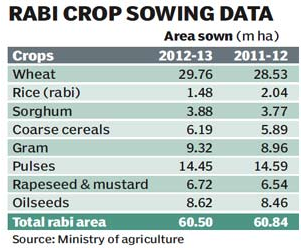
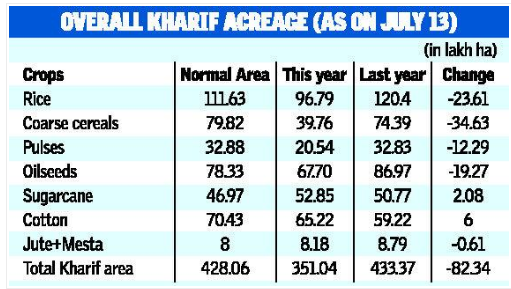
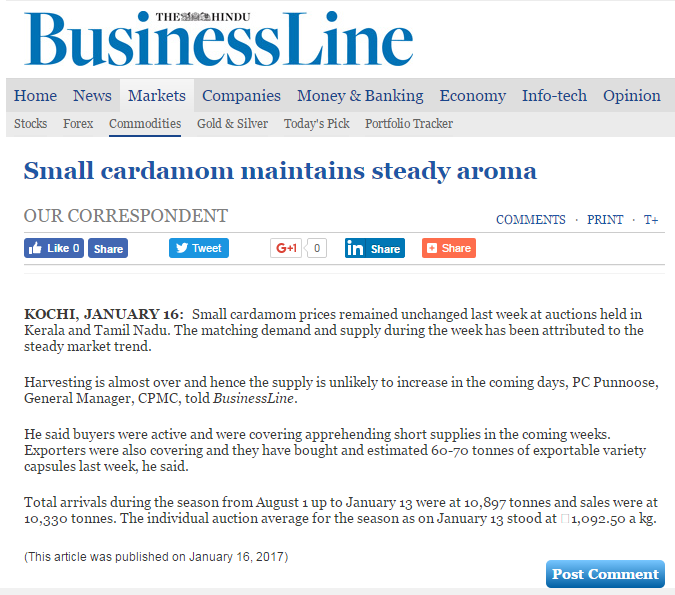
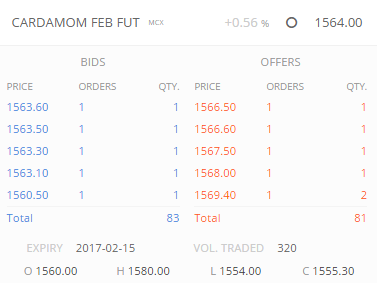

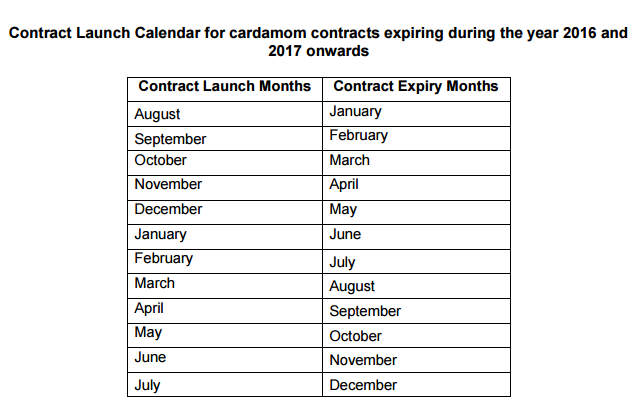
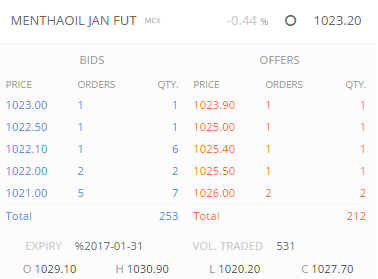

sir what about settlements cash or physical and does technical analysis helps in above contracts.
It will be cash settled. Yes, people do use TA extensively to trade commodities.
Cardmom trade commodity k liye sarvice chahiye
It would be the best if you avail bookmark option on website as it is in the varsity app.
Noted.
Sir, cardamom futures not seen in kite. Is it cancelled?
Not sure about it, need to check. Meanwhile, you can check with the support team as well.
Sir,
I love the way you explain and teach all these things in such simple words. Thanks a alot.
Happy learning, Tej!
Sir I think agri Contracts are not liquid Enough
There is not much in charts to even see price action
I\’m talking about current month contract
No, they are not liquid.
https://drive.google.com/file/d/1L7u7sh-oS5JL2nNQek1ir2HbrEsJh6eo/view?usp=drivesdk
Sir above pic is from kite
For every commodity I took current month contract
As you can see there is nothing or much candle stick to do TA
No liquidity, Bharath. Hence no trading, hence no candel formation.
Hi karthik ji,
As you mentioned above that \” note that agri commodities (especially the Indian agri commodities) are traded till 5:00 PM.\”
is commodities traded past 11:00 pm ? i see people trade in commodities at 11 pm in kite…
can you please give/update timings related to it?
That\’s right, commodities like Crude and Gold are traded till midnight.
How price of Soyabean Refined Oil decided? Does NCDEX Refined Soy Oil Futures plays role in it?
Ah, I\’m not really sure about this.
Sir,
The guy dripping in the rain with empty pockets looks familiar.
Thats nice, whom does it remind you of?
I can\’t believe someone like you could have had such a heavy loss. You have come long way. S.
Why is a exchange(mcx) listed? Isn\’t it govt owned? Does that mean nse can also list itself?
Losses are an integral part of trading in the markets, it is just that you need to ensure the losses are well within your budget 🙂
Exchanges, including NSE are privately owned and not Govt owned.
i am unable to comprehend staggered tender delivery margin and delivery period margin mentioned in cardamom contract.
can you explain this
Mukund, these are for physical delivery of commodities, which we don\’t support at Zerodha.
Hi Karthik,
Assuming i am a rice farmer and i want to hedge against falling price, how do i do that. There is an exchange market price (MCX and all) and there is a physical market price where i will sell my produce. The prices in the two differ but i am guessing there is a correlation. But where do i find the prices of this. Can you please explain in a little detail, how to do that. And also as there is a liquidity problem with far month futures, how can i roll over to the next month and what will be the cost.
Thanks
Javid, you simply have to short the futures on MCX. So with this, you\’d have a long position in the spot and a short in futures, and net-net you are hedged.
In above chapters of commodity trading MCX is used as example. Then for what purpose NCDEX is used.
MCX has most of the liquidity, Pratik.
And sir I follow one big thing very long days that do you know there is any operator\’s game to take a Stop-loss.. Coz I follow that long day suppose let\’s say I buy crudeoil at 3500 so I place Stop-loss in cove order 3490 and trg is 3509 but market just touch 3489 and move up like a rocket and successfully archive 3513 and I make a loss… Yea most of the time it\’s happened with me why sir?? What should I do for this?How to handle this market operators?
Sourav, I think the problem could be with your strategy and it is not really about a market operator 🙂 Have you backtested your strategy? Do you know how it has behaved in the past? How many wins, how many losses? I\’d suggest you do this before placing the trades.
Ok ok Sir I will do backtest.. thank you..
Good luck!
Sir two month I only trade in crudeoilmini 1 lot with cover order. setup is one 10 periods weighted moving average and one pivot point default time frame 5minutes chart yes it\’s working but more that 7 or 8 day\’s I make loss for high volatility. I follow candlestick pattern very carefully but still market didn\’t follow any pattern any rules .why it\’s happened? There is any techniques to stop loss permanently..
I just wait for 8 point in crudeoil but more than 7 day\’s I make loss.. Do you really think my setup is good.. Or I have to add something..
Maybe you should increase the frequency of the chart.
Okay sir
Sourav, the whole of technical analysis enhances your probability of making money but does not guarantee the same.
Sir In advance Wishing you a blessed and Happy Ganesh Chaturthi!
Thanks, Sourav, wishing you and family the same!
Stay blessed.
sir thank you very much for ur simple setup strategy. Currently I am using one exponential 21 moving average And only one elher Fisher indicators for final confirmation it\’s working fine but it\’s not working in choppy market.. How to confirm that market is side ways???I got too many false signal during side ways market how to avoid?? And sir it is possible to trade in menthoil using COVER ORDER ??
Maybe you should combine this with a momentum indicator to identify a trend. Something like an ADX?
ADX is for identify the sideways market?? And can I trade in menthoil using COVER ORDER?.?
ADX for trending market. No CO for commodities.
OK Sir Thank you..
Welcome!
Sir please tell me from where to find all basemetal latest news zinc lead copper..
Any good website?? Inventory website also
And do provide natural gas related good website inventory data..
I\’m not sure where you can find this information Sourav. I\’d suggest you give Bloomberg\’s website a try.
And sir in depth option there have a two option called BIDS AND OFFERS, BIDS means buyers and offers mean sellers right?and every second it\’s just changing with current market price should I take a long position if total number of Bids quantity is much higher than offers quentity if answer is big no then what is the imopotancy,what are they doing in depth option.why?explain please sir
I\’d suggest you read section 9.6 here – https://zerodha.com/varsity/chapter/the-trading-terminal/
sir as you said last day to use only 21 EMA and candlestick pattern and using 15 minutes time frame and 4 hours time frame Combinations thanks sir it\’s working good but sir I tried today Heikin ashi chart candlestick instead of seeing normal candlestick with 21 EMA and I got amaze it pretty good very smooth candlestick pattern but sir can you tell me what Heikin ashi actually does? It\’s same as normal candlestick pattern ? Can I trade with help of it… Correct me please and I need details..
Hmm, I\’m not too comfortable with Heikin Ashi, I\’ve only worked with Candlesticks….so I may not be the best person to talk about this.
Sir my second question is suppose my whole setup is showing to go long or short any particular script let\’s say nickel or copper.. Do you think that should I enter that trade immediately.and sir do you think that total number of buyers and sellers will help me to take any decision or its just a phenomenon.. Will it work fine?
It really depends on your conviction. If you are confident, you should go ahead and place the order. The final outcome is not in your hands…however, it is your duty to ensure that the trade logic makes sense.
Ok I understood.
Cheers!
Sir currently I\’m using pivot point standard setting,exponential moving average 10 and 21 crossover, And MACD 12 26 2 9, and stochastic 21,and price momentum oscillator is called PMO(35,20,10) chart time-frame 15 minutes… Now my question is sir do you think that this setup will help me to take right decision in trading..Help me sir if my setup is wrong.. I will trade mcx only like nickel, copper, and crudeoil.
Sourav, I think you are complicating the set up 🙂 Try and see if a simple candlestick + EMA works for you. You can calibrate it further if the setup is not working. The key is to keep the setup simple.
Ok Sir I do but EMA means crossover or only one single EMA and candlestick pattern.
And which EMA 21 or lower number.?
21 is good enough I guess.
EMA refers to a single average…but you can do a crossover between 2 EMA. Like 9 and 21 EMA.
Ok Sir thank you I\’m going to try it..
Goodluck, Sourav 🙂
Sir why I can\’t trade menthoil in MIS.
Its highly volatility Sourav, hence no MIS. Besides, there is no liquidity as well.
Ok Sir..
Do zerodha probably provide NRML in Equities.
NRML equivalent in equities is CNC.
Why are we progressing so slow here?
I know this may be due to your busy schedule.
But we need the remaining modules (most imp one) asap.
Maddy, I\’m trying to put up at least 1 chapter per week…takes a bit of time writing it, request you to kindly co operate. Thanks for your patience. However, this module is almost done…just 1 more chapter, which will be out next week. Will be starting the next one soon.
Take your time Karthik! your narration is always outstanding. its true we eagerly wait for your article and its really very soothing to get your latest articles.
Happy to know that, Ritukant 🙂
Thank you so much for the advice.
I\’ll be giving CFA this December. I\’ve graduated and looking for a job so that I can get an experience and prepare for CFA simultaneously.
I\’m facing a lot of difficulty in finding a decent job in a good Trading firm since I\’ve an engineering background.
Should i start applying in average firms or do i go for higher studies.
Could you please give me inputs. Thanks.
If CFA is your focus, then I\’d suggest should try looking for jobs with Asset management companies, Rahul.
sir,
i want to know about pennystocking for trading purpose?
since these stocks are considered very risky, so should i stick to the checklist you recommended in trading or there should any extra precaution i shoud consider?
i am an amateur and also need ur advice whether i should do pennystocking or not?
If you are starting now, I\’d suggest you stick to quality large and mid cap stocks. Penny stocks are quite risky and is usually operator driven.
In what range of price penny stocks lies?
thanks in advance… 🙂
Generally, any stock less than Rs.10/- is considered a penny stock.
Sir,
I am a little off topic but I believe you are the right person to answer this question.
For those who are seeking job in brokerage industry? do NISM certificates actually help? If yes, which one of them has the maximum demand?
Really depends on what you kind of jobs you are targeting at the brokerage industry. If it is dealing, yes, NISM helps (and is mandatory). For everything else, you need to go beyond NISM.
Hey. Your work is really inspiring. I want to pursue trading as my career. Being from an engineering background, I\’m new to this domain of Finance. I really want some guidance. Could you please let me know the higher education scene in India or any foreign university? Any inputs will do. Thank you.
I\’d suggest you give the CFA certification a shot. It can land you in a job in the asset management industry. Check this – https://www.cfainstitute.org/programs/cfaprogram/Pages/index.aspx
I don\’t plan on working for Mutual Funds. Hedge Funds have a trading Department as well? Will I be able to do trading in stock market by learning from your writings under asset management firms?
Yes, Hedge Funds is all about trading. I hope you can learn a thing or two from Varsity, that will help you work in a asset management firm.
Waiting for Chapter on Natural Gas…
when will it available ?
Next week I guess 🙂
Please make this available in PDF file as other modules..
Very soon.
Very good and precise narration. Got to know why MIS not available for Agri Commodity.
As I mentioned in the chapter, agri commodities are kind of volatile and tends to hit the circuit frequently. Hence no MIS.